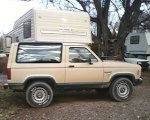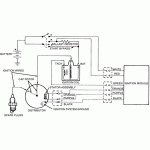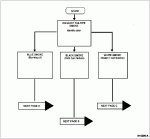The only real problems I've ever had since I bought it in '88 with 20,000 miles were all fuel related. Now, with 142,00 miles the fuel related issues - I think- are tricking all my local mechanics up.
At 80,000 miles in '95 the engine seized from a "gas lock". Had it repaired, but later saw and left alone a tiny leak from the valve cover gasket.
Last summer it wouldn't restart if I shut it off for a very short time..it was flooded and would start after letting it sit for 20 min or so. So I had the fuel filter replaced. That went away till this summer and it began again..A mechanice sugeggested a stuck fuel jet but also noticed and thought I had overfilled my oil - not so. Took it to Walmart for an oil change and fuel system cleanout. All this time the car actually ran fine and even idled fine - I don't drive it much so checked the battery.
Walmart saidf the oil was overfilled by 3 quarts. I did notice a longer pattern of drips on the ground as they ran down the center of the rear. Walmart thinks its a rear diff. leak and a transfer case leak ..??- as well as an oil leak.
During Walmarts fuel cleanout they said the car ran fine..then suddenly ran out of gas. We gave it 5 gallons. But they couldn't get the car started again..
My mechanic that did the fuel filter picked it up ..and of course it started fine and hasn't died out. Fuel pump pressure was 32, so not fining anything else they gave it back. Now I notice driving it home it's running rough..sputtering ..
Here I have to say I'm disabled and don't have a big budget so they were trying to help.
Was that gas in the oil?? I saw the dipstick and it was low on real oil, but clear up higher. So I began worrying about another "gas lock"??
Don't know where to look now for whatever is wrong.. Don't feel safe with that coughing and sputtering..??
Any ideas are desperately needed?? Could sell it but need to know the problem..

At 80,000 miles in '95 the engine seized from a "gas lock". Had it repaired, but later saw and left alone a tiny leak from the valve cover gasket.
Last summer it wouldn't restart if I shut it off for a very short time..it was flooded and would start after letting it sit for 20 min or so. So I had the fuel filter replaced. That went away till this summer and it began again..A mechanice sugeggested a stuck fuel jet but also noticed and thought I had overfilled my oil - not so. Took it to Walmart for an oil change and fuel system cleanout. All this time the car actually ran fine and even idled fine - I don't drive it much so checked the battery.
Walmart saidf the oil was overfilled by 3 quarts. I did notice a longer pattern of drips on the ground as they ran down the center of the rear. Walmart thinks its a rear diff. leak and a transfer case leak ..??- as well as an oil leak.
During Walmarts fuel cleanout they said the car ran fine..then suddenly ran out of gas. We gave it 5 gallons. But they couldn't get the car started again..
My mechanic that did the fuel filter picked it up ..and of course it started fine and hasn't died out. Fuel pump pressure was 32, so not fining anything else they gave it back. Now I notice driving it home it's running rough..sputtering ..
Here I have to say I'm disabled and don't have a big budget so they were trying to help.
Was that gas in the oil?? I saw the dipstick and it was low on real oil, but clear up higher. So I began worrying about another "gas lock"??
Don't know where to look now for whatever is wrong.. Don't feel safe with that coughing and sputtering..??
Any ideas are desperately needed?? Could sell it but need to know the problem..



